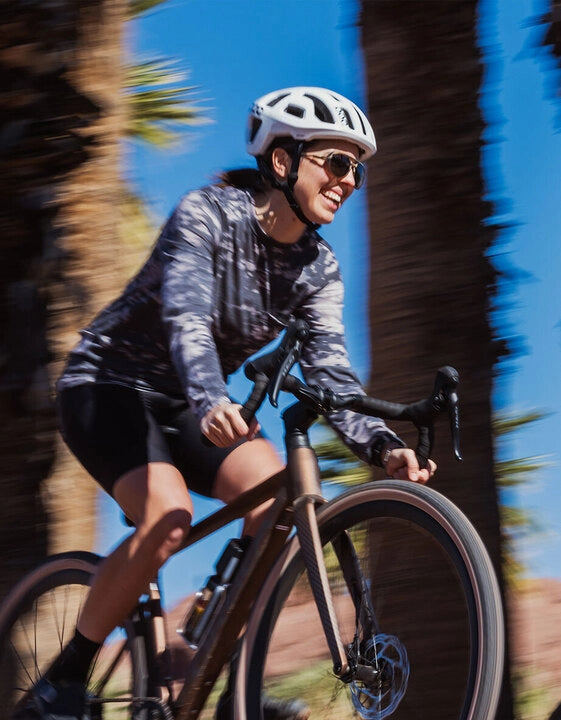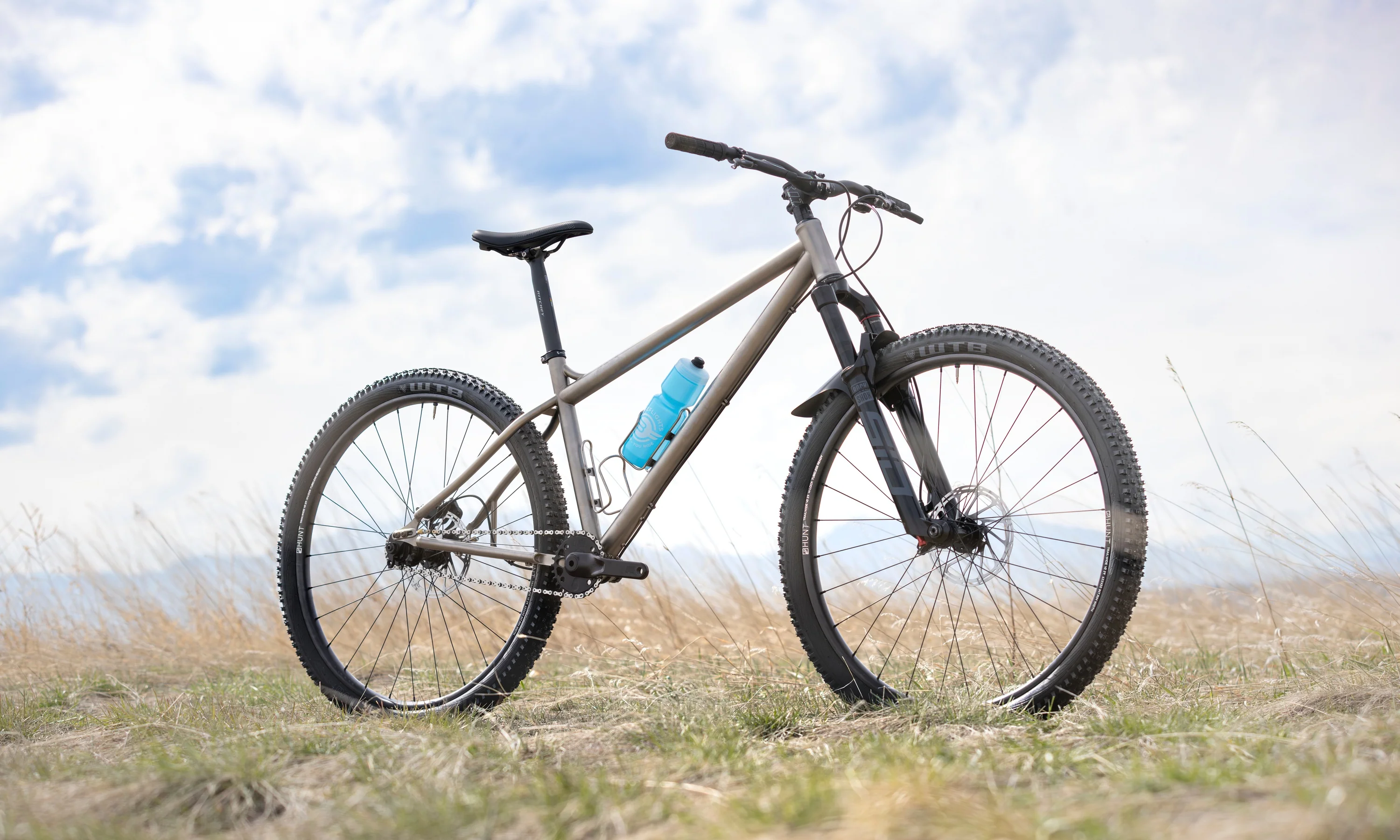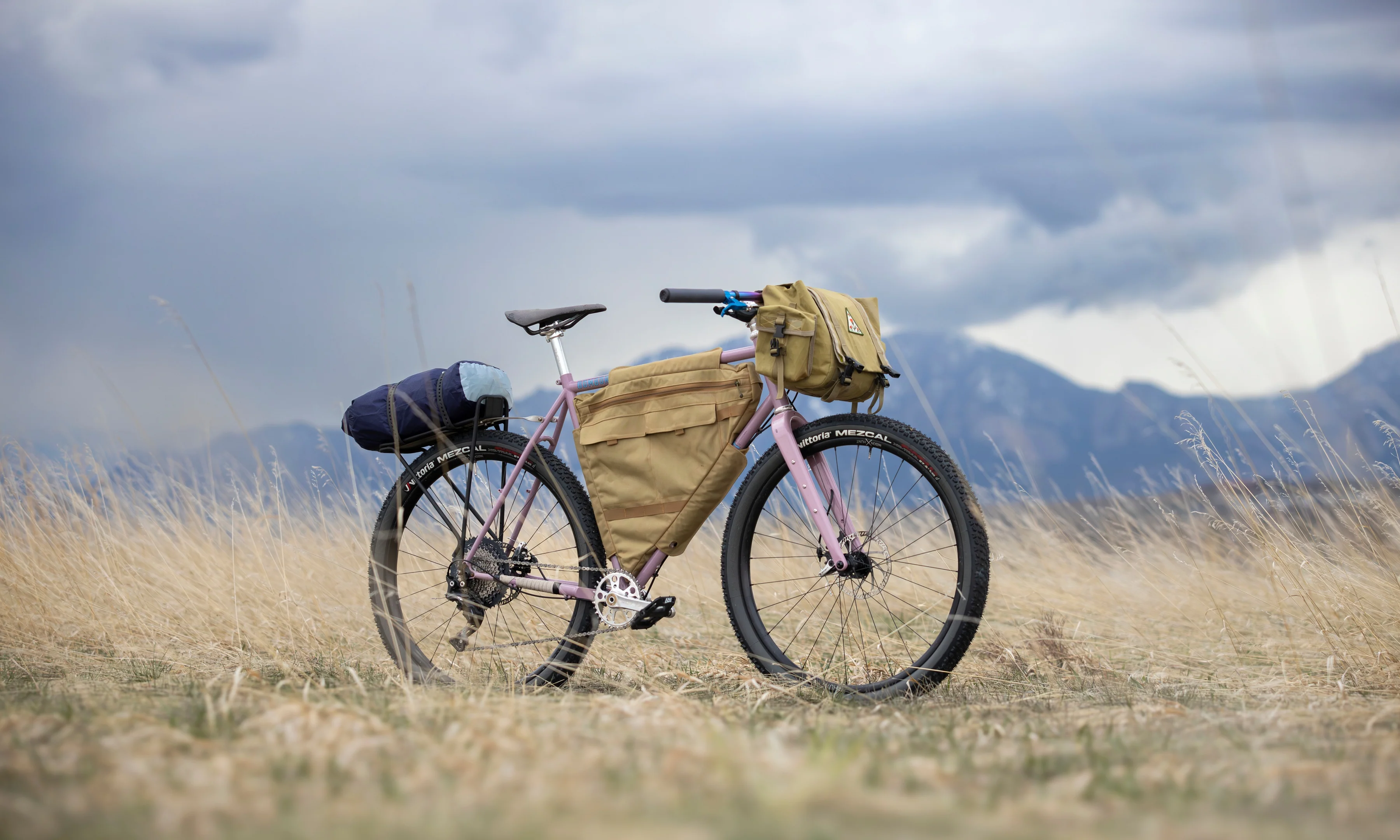We already know that cycling kits look ridiculous, so why not lean into it and get some performance gains too? If your riding kit is aero, extra light, extra ventilated, or has some other performance benefit, then it can save you watts, keep your core temp low, and increase comfort so you can ride harder for longer. When I put on my favorite kit, I’m like Frozone and his super suit — ready to be a hero.
This year, I’ve put together a new super suit to conquer the big boss: Unbound Gravel 2024. I’ll review the apparel I’m using, from head to toe, to take on the high speeds, long distance, and brutal heat. Pick some of this kit up for yourself, and it could give you an edge in your next race of fast group ride.
[button]Shop Apparel[/button]
Aero Helmets

If Keegan wears it, it's probably fast...
Modern aero helmets have gotten super well-ventilated, so I wear one on almost every ride. They don’t get too hot unless I’m crawling up a long and slow climb on a super hot day. Events like Unbound are the perfect place to save a few watts with an aero helmet. It features a lot of flat or rolling terrain and your speeds can get decently high, so there are plenty of gains to be had.
[product-block handle="giro-eclipse-spherical-helmet"/]
My favorite aero helmet for the past couple of years has been the Giro Eclipse. Giros have always fit my oval head shape really well. The Eclipse is also the helmet used by the current king of gravel, Keegan Swenson, as well as top World tour riders like Wout van Aert and Jonas Vingegaard, so it has some serious street cred.
The Eclipse uses Giro’s MIPS Spherical Technology, a ball and socket design that provides rotational impact protection (to prevent concussions) without using a plastic MIPS liner, which I’ve found negatively affects the fit of many helmets.
Giro also claims the Eclipse is their fastest helmet, beating out the previous-gen Vanquish helmet as well as the competition. You’ll have to take their word for it though since I don’t have a way to test this.
There are plenty of other aero helmets on the market too. Here are 3 more that I’ve really liked.
[product-block handle="poc-ventral-spin-mips-hydrogen-white"/]
[product-block handle="sweet-protection-falconer-aero-2vi-mips-helmet"/]
[product-block handle="7454133780672-specialized-s-works-evade-3-helmet"/]
The POC Ventral is a helmet that I’ve raced in a lot. I think it is probably the best-looking aero helmet on the market, and it vents slightly better than the Eclipse so I tend to reach for it on super hot days or days with a lot of climbing.
The Sweet Protection Falconer Aero is another super attractive option that comes in great colors. It’s essentially the same helmet as the standard Falconer, but it adds some trick magnetic vent covers. You can leave them installed when you want to go fast or easily pop them off when it’s hot.
Then there’s the Specialized Evade 3, which has long been the benchmark for aero helmets. I wore the Evade 2 for years and loved it. The Evade 3 is designed to be just as fast but with much better ventilation. If you can’t decide on an aero lid, it’s hard to go wrong with the Evade.
[button]Shop Helmets[/button]
Good (Maybe Photochromic) Sunglasses
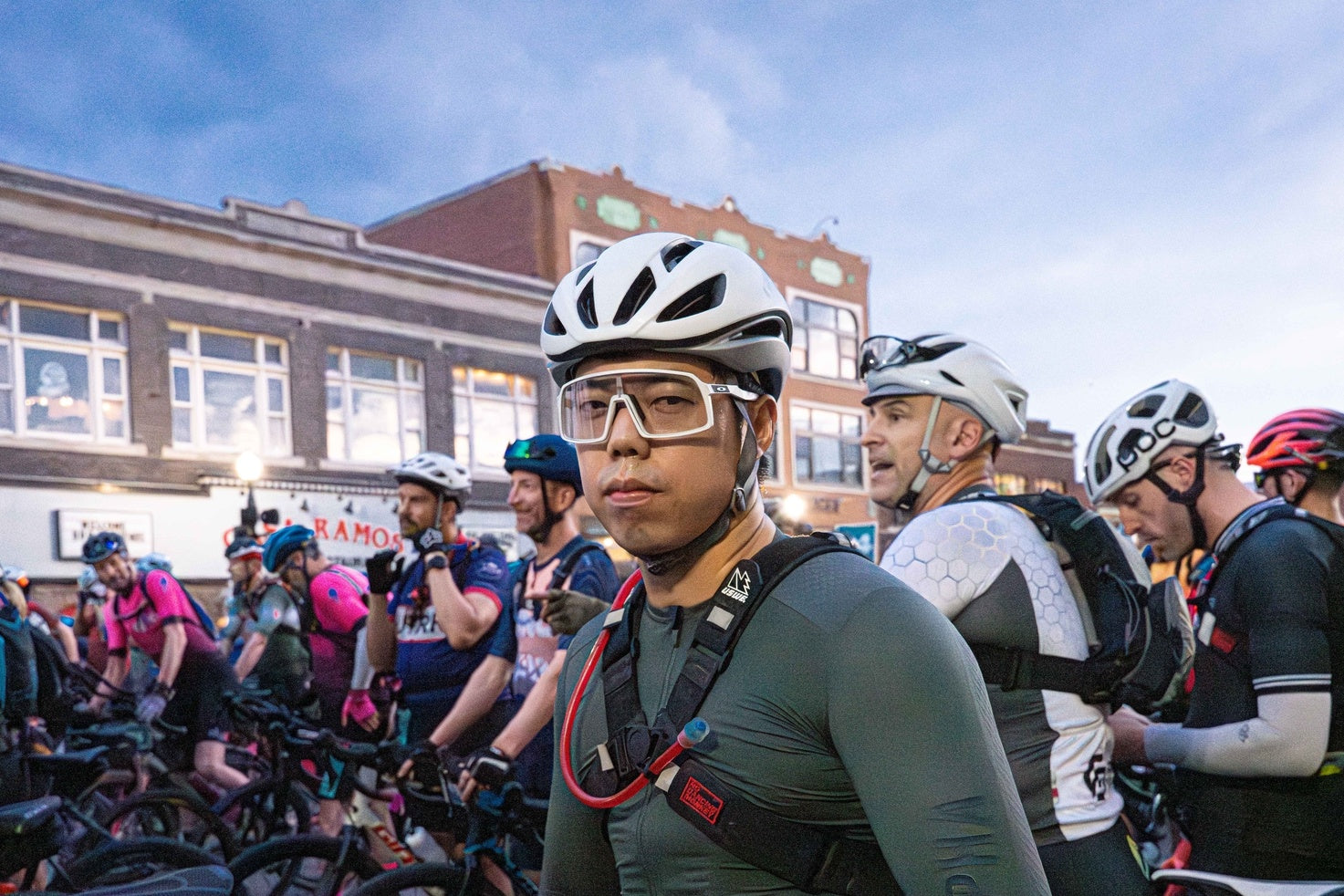
I never have to take my sunglasses off, even in the dark.
With sunglasses, I want them to look cool and protect my eyes, but the main thing I care about is that they stay on my face. There’s nothing more annoying than constantly pushing glasses back up your nose during a ride or race.
[product-block handle="oakley-sutro-sunglasses-grey-ink-with-prizm-road-jade-lens"/]
My favorite sunglasses for a while now have been Oakley Sutros, which are the most popular Oakley models we sell. I have four pairs of these, all with different lens options. They don’t work for everyone though. For me, the Unobtainium rubber nose pad does a good job of keeping the glasses on my face. Some people, however, need rubber grippers on the arms too.
[product-block handle="7154254840000-oakley-sutro-lite-sunglasses"/]
[product-block handle="7154258772160-oakley-sutro-lite-sweep-sunglasses"/]
If you still want that Sutro style, the Sutro Lite or Sutro Lite Sweep adds more rubber to the sunglass arms. If you need maximum hold, my go-to glasses have been Oakley Jawbreakers. These are what I wore when I raced Unbound in 2022.
That said, sunglasses don’t have to be expensive, and you don’t need Oakleys to keep your eyes protected. If you're looking to save, we carry Tifosi glasses, which are probably one of the best-value cycling sunglasses on the market.
Unbound starts at dawn, and if you’re going to be on course for longer than 15 hours (this will be a lot of people) then you’ll be finishing in the dark, so your sunglass strategy is something worth thinking about. For Unbound specifically, I really like riding with Oakley’s photochromic lens, which can change for different light conditions and can go nearly clear in the dark.
Photochromic lenses let you wear the same pair of glasses from start to finish. If it gets dark and stormy like it has the last couple of years, then it’s really convenient to have a lens that can adapt when the sun hides. The only downside is that they might not get dark enough for people with sensitive eyes. They reduce ambient light by 77% when fully darkened, while most dark lenses are closer to 90%.
[button]Shop Sunglasses[/button]
Ventilated and Aero Jerseys

I like jerseys that are lightweight, meshy, and tight to help manage heat.
There are two basic rules I follow when selecting jerseys for performance:
- Keep it light
- Keep it tight
Light refers to a couple of things — the fabric itself, and the color.
The biggest thing I struggle with is heat. I had a disappointing performance at SBT GRVL last year because of the high heat. Unbound is notorious for heat, so I need to be prepared. The race has been muddy the last two years, but the sun still comes out. When it does, there’s no tree cover and you end up baking.
Jerseys specifically designed for heat are often made from ultralight fabrics that keep you cooler. My favorites use meshy fabric to help increase airflow and wick away moisture. These ultralight jerseys tend to be a bit see-through, especially in lighter colors. I’m shameless enough to not mind, but it’s something to keep in mind.
Great ultralight jersey models that I’ve used include:
- Castelli Superleggera
- Pearl Izumi Pro Mesh
- Rapha Pro Team Lightweight
- Specialized Prime Lightweight
- Velocio Concept Radiator
- Velocio Ultralight Mesh
[product-block handle="specialized-mens-prime-lightweight-short-sleeve-jersey"/]
[product-block handle="specialized-womens-prime-lightweight-ss-jersey"/]
I wore a Pearl Izumi Pro Mesh jersey in 2022. Last year, I wore the Rapha Pro Team Aero Jersey, which isn’t as meshy, but is still very thin and lightweight. This year, I’m leaning toward the Specialized Prime Lightweight Jersey. It might be one of the lightest jerseys I’ve ever worn, and it comes in some great colors.
On that note, jersey color does have some effect on how cool you feel. David Schultz wrote a piece for our blog on how kit color keeps you cool. He used a thermal camera to compare how hot different colors get, and it’s what you expect — darker colors get hotter. But he also found that the difference between light and dark colors gets smaller once air moves over the fabric and it gets wet from your sweat. Looking at his results, I wouldn’t stress too much about jersey color. If you like black, wear black. If you want to leave no stone unturned though, wear a lighter color.
As for tightness, I like wearing the smallest jersey I can squeeze into. (If it zips, it fits! In my case, that’s usually a size large.) There are a couple of reasons. A tighter jersey will have fewer wrinkles and flappy bits hanging in the wind, so it’s more aero, which will save you valuable watts. There are dedicated aero jerseys as well, but a standard super-tight jersey will provide nearly the same performance for less money.
A tighter jersey keeps you cooler too. Bare skin is the best at cooling, especially when combined with the evaporative cooling you get from sweat. But most of us are not going to ride shirtless. To maximize a cycling jersey’s ability to keep you cool, it needs to be tight to reduce the distance your sweat needs to travel to evaporate. There are actually scientific studies where researchers have found that the more fabric you have in contact with your skin, the better its wicking and cooling properties are. The more form-fitting a jersey is, the closer it gets to the performance of bare skin.
If you don’t want to wear a jersey that looks like it’s painted on, then wearing a skintight hot-weather base layer under a looser jersey could be a good strategy, but that’s something you’ll have to test out. I’m personally not a fan of wearing MORE clothes in the summer.
[button]Shop Jerseys[/button]
Comfy Cargo Bib Shorts
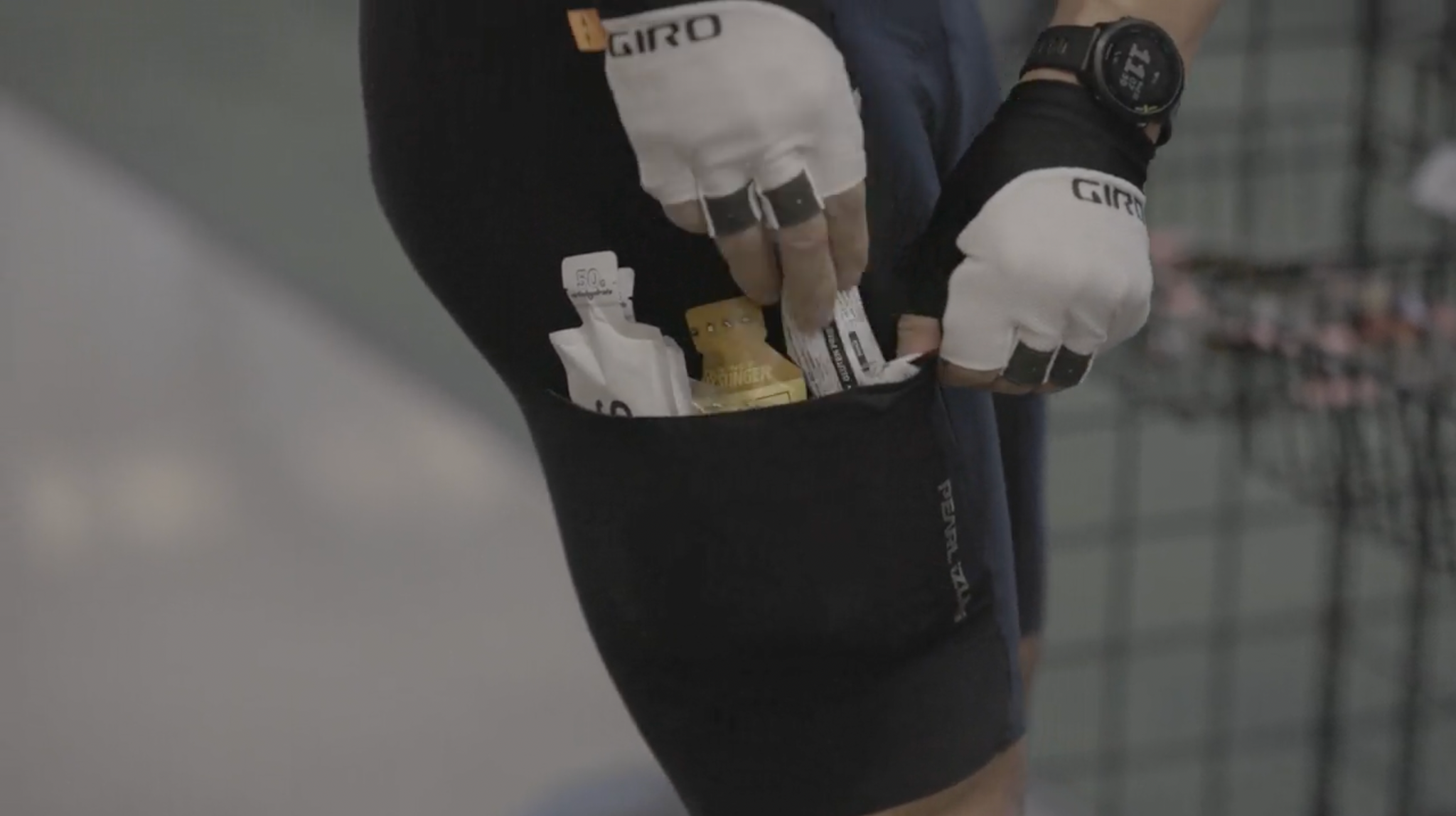
To perform in endurance events, comfortable shorts are a must. Nothing saps your motivation like saddle pain. However, finding the right pair of bibs can be like finding the right saddle. One rider might find a pair of bibs comfortable enough for a 200-mile ride while another rider can’t stand more than a couple of hours.
I generally shop for cycling bibs in the $150+ range. Most bibs around this price use a pretty solid chamois and are well-constructed. If your backside is decently trained (you’ve ridden plenty of miles), then a $150+ bib short should be just good enough to get you to the finish. I’ll admit though, I tend to ride in much pricier options just because I like them.
There are only 4 or 5 major chamois producers and most kit manufacturers use a chamois sourced from one of these suppliers. Different brands often use the same chamois. A lot of the comfort of a bib comes down to how the chamois is sewn into the bib, how the bib is constructed, and the fabrics used. This is why a lot of riders find high-end bibs more comfy. It’s not just the chamois, but the entire construction.
Here are the bibs that I currently like using on my 6+ hour rides:
- Anything by Assos
- Giro Chrono Expert & Chrono Elite
- Ornot
- Pearl Izumi Pro
- Rapha Pro Team & Classic
- Specialized Prime
- Velocio Concept & Luxe
All of these options have great chamois, but Assos is generally the most renowned. Back in the day, there were rumors that pros would get Assos chamois secretly sewn into their sponsor kit. Assos chamois are made by Elastic Interface, which a lot of top brands also use. The one difference is that the chamois that Assos use are only available to Assos. When someone comes into TPC asking for a comfort recommendation, Assos is my go-to.
I'm likely going to wear my Rapha Pro Team bibs this year, for reason other than they match my Pro Team Lightweight jerseys.
The one feature I’d consider looking at if you’re buying a new pair of bibs for Unbound is cargo pockets. Cargo pockets are super handy if you need to carry a lot of extra food. I used Pearl Izumi Pro cargo bibs back in 2022 because my bike at the time didn’t have a mount for a top tube bag so I stuck all of my gels and chews in the thigh pockets. You can actually stick a lot in these pockets and it kind of disappears. I’ve carried a beer can in my cargo pockets before. It’s also a great spot for your phone or wrappers and other trash.
[product-block handle="ornot-mens-cargo-bib-short"/]
[product-block handle="specialized-mens-prime-swat-bib-shorts"/]
The two carbon bibs I use the most now are Ornot’s Cargo bib, which is made from recycled fabrics, and the Specialized Prime SWAT bib.
[button]Shop Shorts & Bibs[/button]
(Lightly) Padded Gloves

I’m naughty and usually don’t ride in gloves unless it’s cold. Over long distances on rough terrain, the skin on my palms can get very tender, so I will wear gloves at Unbound just to take the edge off. However, I hate gloves with gel padding or thick padding.
[product-block handle="7449285951680-giro-supernatural-lite-gloves"/]
I’m using Giro Supernatural Lite gloves which have super thin padding so they provide a bit of extra cushion without messing with the feel of my bars. By the way, these are the gloves that Keegan Swenson wears, so maybe they’ll provide some race-winning mojo too.
[button]Shop Gloves[/button]
Aero Socks
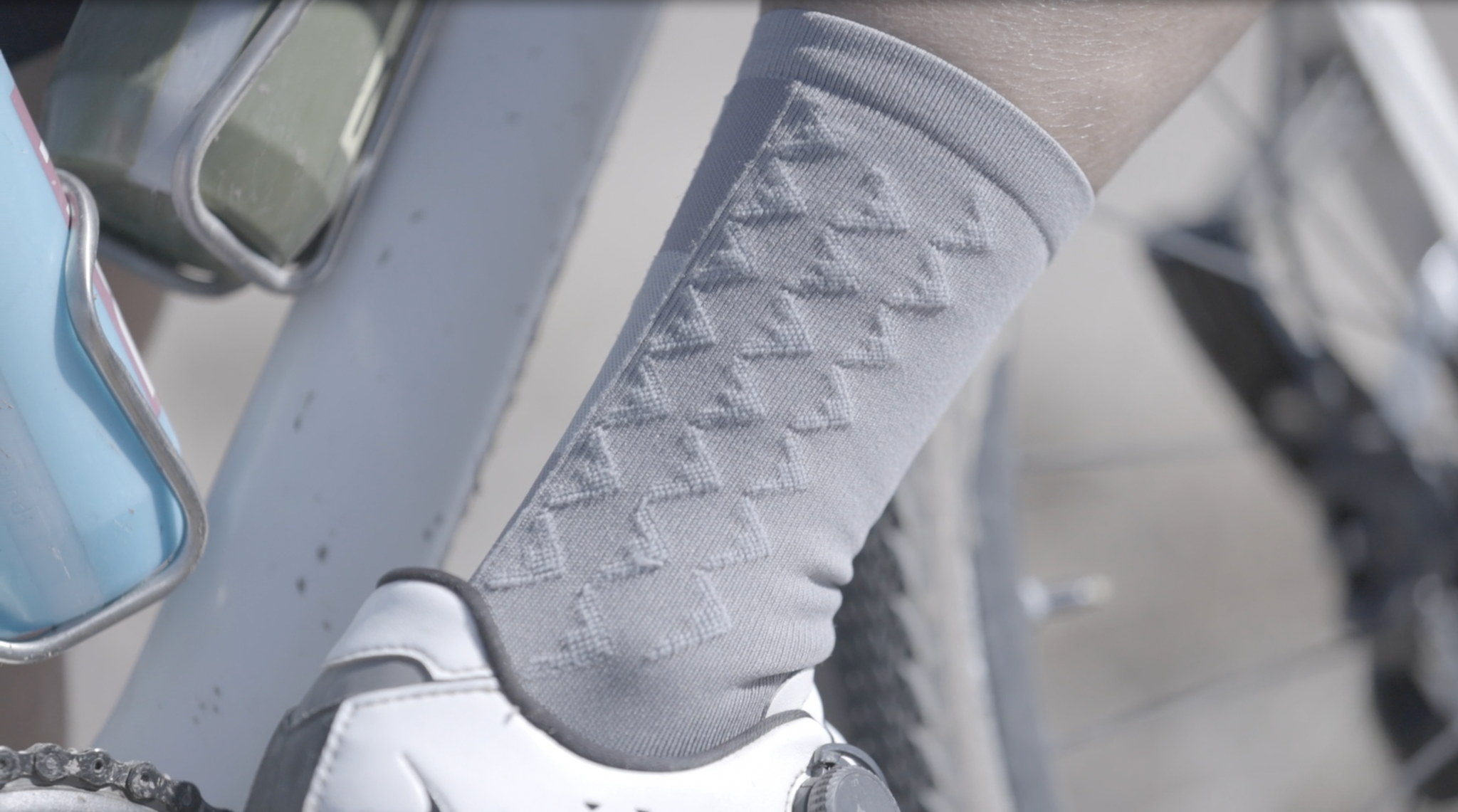
Want to get nerdy? Aero socks are the cheapest way to buy extra speed. Your lower legs are essentially vertical tubes. Aero socks keep the air passing over them from separating, which reduces drag.
[product-block handle="7459208659136-silca-everyday-aero-tall-socks"/]
[product-block handle="7325970301120-silca-aero-race-sock"/]
I wear Silca Aero socks, which claim a 4-8 watt gain. Other aero socks claim as high as 12-17 watts. These are generally legit claims too because aero socks have been extensively tested in the wind tunnel.
Josh Poertner from Silca, who is one of the most respected aero and marginal gains experts in cycling, said it was shocking the first time he tested aero socks with pro teams. The results were dramatic and repeatable on a lot of athletes. There’s a reason World Tour pros all wear aero socks now.
I prefer the Silca Aero socks to other potentially faster options because they’re constructed like a normal knit sock. Unlike lycra aero socks, they don’t look goofy, they stay snug, and they don’t fall down, so you don’t have to do crazy things like glue them to your legs. The raised chevrons knit into the back of the sock disturb the air and keep it attached to your leg.
They’re also just really well-made socks. They’re super thin and snug, which is great on long and hot rides, and they also don’t cost much more than other nice cycling socks.
[button]Shop Socks[/button]
Comfortable (and Wide) Shoes
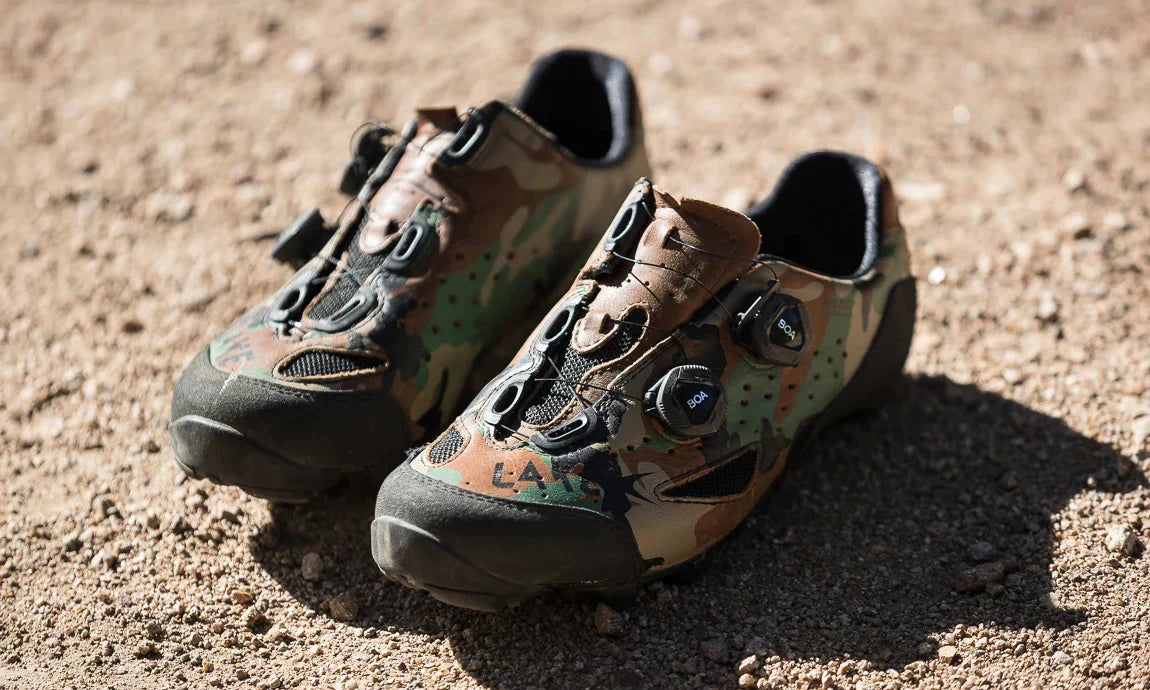
Like saddles and bibs, a lot of shoe comfort comes down to fit. I have 2E wide feet, and I think Lake makes the best cycling shoes for wide feet. They make a lot of nice models that come in wide and extra wide sizes, and they have really good measuring charts that help you make sure a shoe is going to fit.
I’m riding the Lake MX238 Gravel shoe right now. It has a durable upper, a stiff carbon sole, and the newest BOA Li2 dials.
For endurance gravel events like Unbound, I always prefer mountain bike-style shoes to road shoes. There’s a very high likelihood that you’re going to walk at some point, especially if there’s mud. I personally don’t think road shoes and pedals are any much more efficient than mountain shoes with a good, stiff carbon sole. IF they are, I can’t feel it.
For my other wide-foot friends out there, I’ve had really good luck with:
- Shimano XC7
- Specialized Recon ADV
- Quoc Grand Tourer XC
[product-block handle="7358886150336-shimano-sh-xc702-mtb-shoes"/]
Shimano is a common recommendation for wide feet and it used to be my go-to. The XC7 is the most popular off-road Shimano shoe we sell and I find them to be fairly roomy.
[product-block handle="specialized-recon-adv-mountain-bike-shoes"/]
The Specialized Rcon ADV also fit me quite well, but if you’re wider than 2E, it might be too tight.
[product-block handle="quoc-gran-tourer-xc-mtb-shoes"/]
I recently purchased the Quoc Grand Tourer XC, mostly as a “vibe” shoe. They’re very cute, but I did have to go up one size to get them to fit comfortably. Ultimately, I’m going to race in my Lakes because they fit the best and they have a stiffer sole. Avoiding foot discomfort and improving power transfer will make going 200 miles a lot easier.
On that note, most shoes come with crap insoles or footbeds, and they’re always the first thing I swap out. A few years ago, I got some fully custom insoles made at Retul, which were really good, but also pretty expensive.
Now, I just use Specialized Body Geometry SL Footbeds in all my shoes. They’re cheaper, and I honestly don’t notice that much of a difference. I use the Red footbed, which is for low arches. For me, they prevent aches and hotspots on super long rides.
[button]Shop Footwear[/button]
A Sleek Hydration Pack
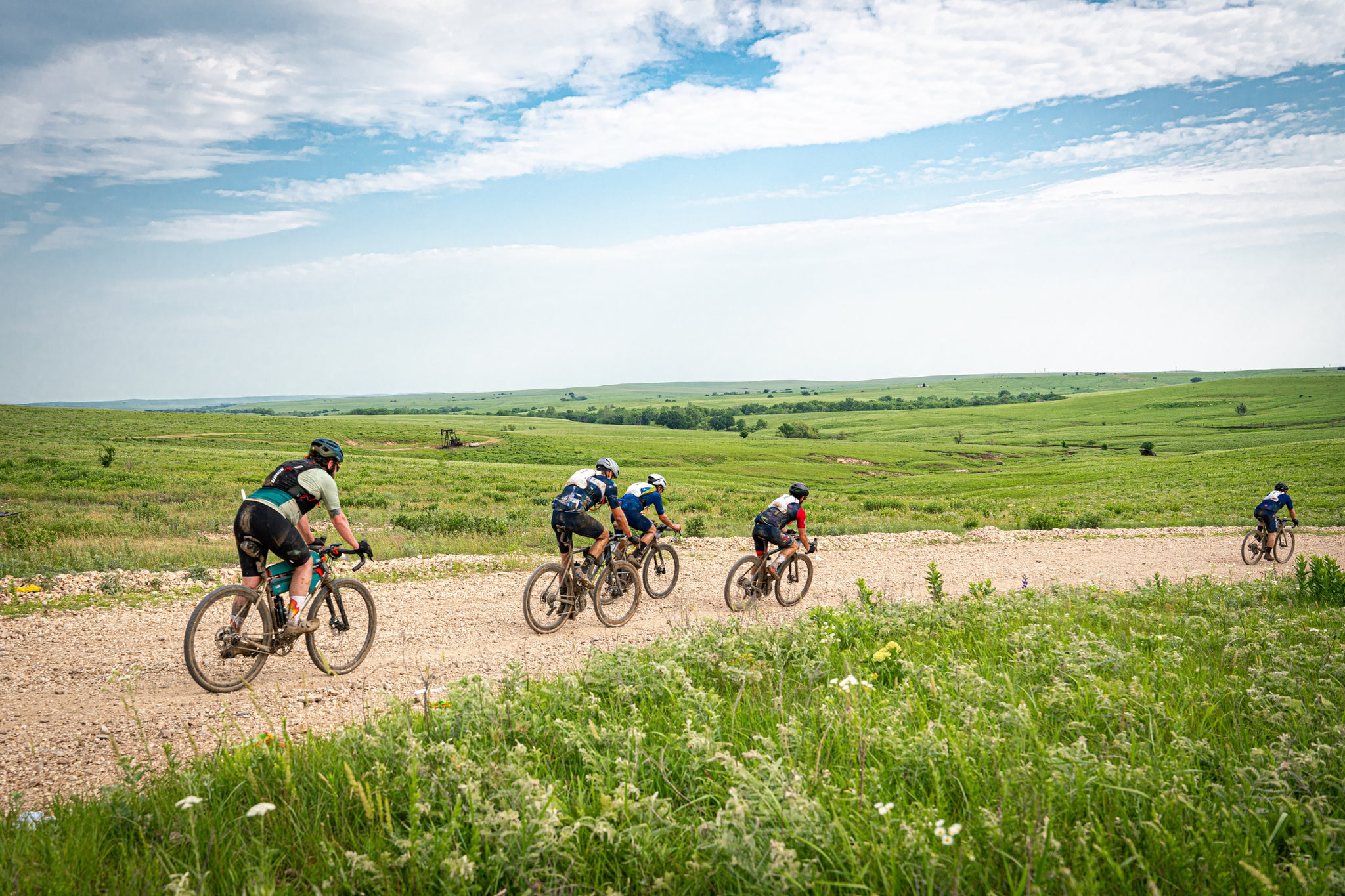
So many USWE packs.
Unless you’re a camel, every rider is going to need to carry some sort of extra hydration on their bike or body to make it to the finish of Unbound. The most popular option is the hydration pack.
If you go to any gravel race and look around, there are two packs that 90% of riders will be wearing: the USWE Outlander 2L/ Outlander Pro or the Camelbak Chase Race Vest. Both use 1.5L bladders that keep things pretty light. As an added bonus, a hydration pack might actually make some riders more aerodynamic.
[product-block handle="camelbak-race-4-vest-1-5l"/]
I own both the USWE Outlander 2 and the Camelbak Chase. Personally, I prefer riding with the USWE Outlander most of the time. It’s a bit sleeker and the single buckle is super easy to use. The one downside is that it can’t carry much. There is only one internal pocket big enough for a phone. If you get the 3L version that has an external pocket, you can’t reach it while you’re riding.
The Camelbak Chase has front pockets that let you carry stuff like extra food, spares, or tools and keep them within reach while you’re on the bike. For ultra-long adventures, the Camelbak is the most useful pack.
I do prefer the USWE HydraPak bladder. It's easier to clean because you can turn it inside out, which is important to me. After all, I like to put sugary drink mixes in my hydration pack.
[product-block handle="uswe-outlander-9l-hydration-pack"/]
Whichever hydration solution you choose, the important thing is that you have enough fluids to make it to each checkpoint. With a couple of bottles, a pack with a 1.5 to 2L bladder should be enough for most people to make it to each checkpoint, or at least to the neutral water stops. Many people, however, might need a larger 3L bladder to stay hydrated. If you’re unsure, it’s better to carry too much water rather than too little.
[button]Shop Apparel[/button]
